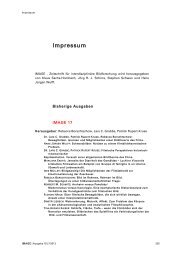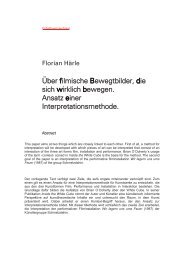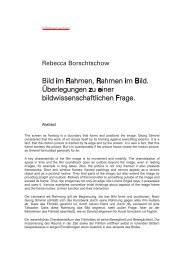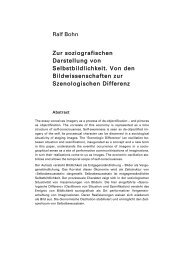Image 9 - Gesellschaft für interdisziplinäre Bildwissenschaft
Image 9 - Gesellschaft für interdisziplinäre Bildwissenschaft
Image 9 - Gesellschaft für interdisziplinäre Bildwissenschaft
Erfolgreiche ePaper selbst erstellen
Machen Sie aus Ihren PDF Publikationen ein blätterbares Flipbook mit unserer einzigartigen Google optimierten e-Paper Software.
DIETER MAURER/ CLAUDIA RIBONI/ BIRUTE GUJER: EARLY PICTURES IN ONTOGENY<br />
in a restricted sense only. (So an appropriate distinction is fundamental to the discussion of picture<br />
genesis.)<br />
Fourthly – early graphic development is highly universal.<br />
A large proportion of inter-individual structure also emerges as universal in comparative cultural<br />
studies, in the sense that today, in the case of extraordinarily marked cultural differences, almost<br />
identical picture qualities and pictorial developments can be made out. This universal aspect applies<br />
to both the graphic element itself and to its relationship with the non-graphic in the form of<br />
analogies.<br />
Fifthly – there are justifiable doubts about pronouncing the formal to be a trace.<br />
Existing attempts to derive the entire development of formal graphic phenomena essentially either<br />
from the senso-motoric apparatus and its differentiation or from the general structures of visual<br />
perception, so that they can be said to be inter-individual or even universal in character, do not in<br />
our opinion stand up to critical and at the same time empirical examination. Indeed we feel there<br />
is room for fundamental doubt about whether an attempted explanation can ever succeed on this<br />
basis. These doubts arise above all from the lack of parallels of graphic expression and its systematics<br />
to general structures of the mobility apparatus or visual perception.<br />
Sixthly – early analogies do often not emerge from any convention.<br />
The above-mentioned observation about quasi-identical early analogy formation in different cultures<br />
criticizes, even on its own account, the assumption that early depictions of figures, objects,<br />
scenes and events are mediated in their essence by the rules of a particular culture. The following<br />
two observations should also be considered: firstly, very young children are able to copy and imitate<br />
to only a very limited extent, and most adults are not able to assess this ability. This sets fundamental<br />
limits to any attempt at mediation. Secondly, many early depictions are not recognized<br />
by adults. But it becomes evident that they still are depictions in cases in which children make a<br />
point about it.<br />
Even if a particular cultural context is able to shape part of any early analogy, another part, and a<br />
significant one, is not subject to this influence.<br />
Seventhly – early graphic expressions are fundamentally intentional.<br />
Even the first clear oppositions of graphic movements and their effects on paper are evidence<br />
of a corresponding intention. Efforts to make a distinction, and thus to continue to produce new<br />
graphic and new qualities to be understood in two dimensions then represent the actual motor for<br />
development. But the intention identified here is frequently not previously present, but develops<br />
IMAGE I Ausgabe 9 I 1/2009 20


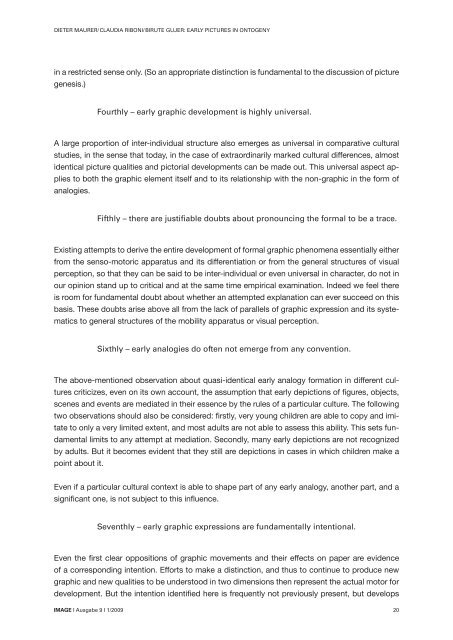
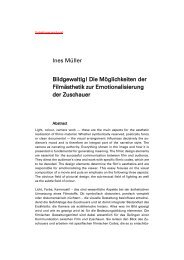
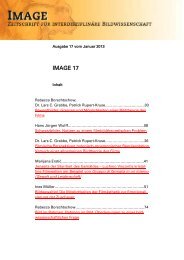
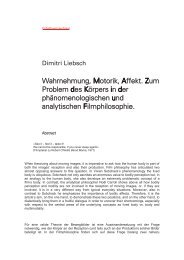
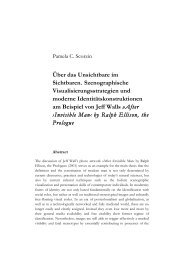
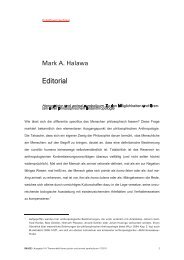
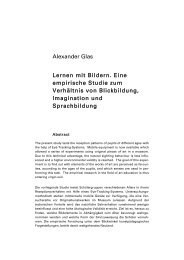
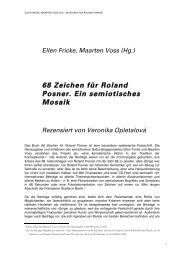
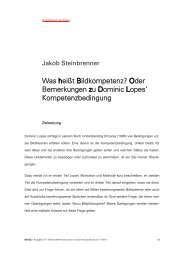
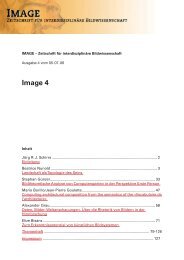
![image 11 [pdf] - Gesellschaft für interdisziplinäre Bildwissenschaft](https://img.yumpu.com/41525154/1/184x260/image-11-pdf-gesellschaft-fur-interdisziplinare-bildwissenschaft.jpg?quality=85)
